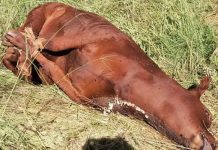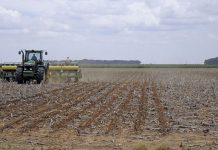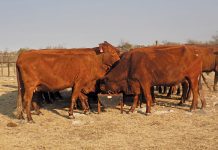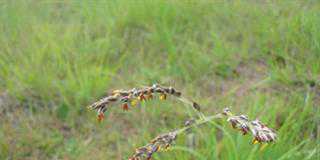In the 1970s, Monsanto invented the world-renowned glyphosate-based herbicide Roundup. When the US patent on Roundup expired in 2000, generic products based on glyphosate flooded the international market, becoming popular with farmers. When Monsanto developed Roundup Ready technology and glyphosate-resistant crops, it became even more popular. KZN’s No-till Club invited Thom Steyn, Monsanto area manager for South Africa’s eastern region, to its 2010 conference to talk about the effect of water quality and application rate on glyphosate’s efficiency.
Optimum water volume ratio
For optimum results, any glyphosate-based herbicide must be handled and applied properly. Thom explains that farmers should also know which plant species they want to eliminate, as this affects the glyphosate:water mixing ratio.“Some weed species need a higher concentration of glyphosate to kill them than others do,” continues Thom. “Too many South African farmers apply the standard 200â„“/ha mix.
The larger the water volume, the more mineral salts are present to negatively affect glyphosate’s effectiveness. A smaller water volume, like Monsanto’s recommended 100â„“/ha to 120â„“/ha with the same amount of active ingredient, combined with the correct spray-nozzle size, will still give sufficient leaf coverage. The higher concentration of glyphosate in this mix will be more effective on weeds.”
Impact of water quality
Water quality influences the functioning of glyphosate. Hard water (see box: Say what?) contains mineral salts that glyphosate binds to, producing a coarse, undesirable deposit on the leaves. The glyphosate will not stick to the leaves properly and consequently penetrates the leaf surface poorly, reducing its effectiveness. This problem can be addressed by adding an adjuvant, wetter, sticker or ammonium sulphate (AMS) to hard water to counteract the effect of the salts on the herbicide.
In the absence of these additives, the concentration of the dissolved salts affects the efficiency of glyphosate. The higher the concentration, the greater the effect.At a mineral salt concentration of 85 parts per million (ppm) in water, a glyphosate application of 360g/ha will be about 65% effective on the susceptibility of the weed species.
At this salt concentration, a glyphosate application of 450g/ha will be 95% effective. But at a salt concentration of 490ppm and above, a glyphosate application of 360g/ha is only 58% effective, whereas a 450g/ha concentration will be 82% effective. Even at a glyphosate application of 540g/ha, the control effectiveness will only increase by 8% to 9%. Consequently, this means that doubling the glyphosate concentration in hard water won’t increase the product’s effectiveness.
Improving effectiveness in hard water
To improve glyphosate effectiveness, even with hard water, Thom suggests using products like Monsanto’s Transorb Technology found in Roundup Turbo and Roundup Ready Plus, as well as AMS products like Velocity, Amsul, Techniboost and Add Up at a 2% rate.
When mixed into hard water, these products increase the glyphosate’s effectiveness to 94%.“Roundup products with Transorb Technology penetrate better through a plant’s epidermis, resulting in good glyphosate translocation throughout the plant. Older glyphosate application technologies tend to need additional wetters, stickers and adjuvants to maintain their effectiveness,” says Thom.
Testing the water pH level
Always test the pH of the water that will be mixed with glyphosate. It should not be below 4,5, especially on Roundup Ready crops. At a low pH, water can burn the crop’s leaves, reducing yield. But water with a pH of 7,5 to 8 isn’t necessarily of good quality as it may still contain mineral salts. As most crop farmers regularly test their soils, they should test the water for optimal glyphosate application.
“If you’re unsure whether your water’s quality is suitable for use with a Roundup Turbo or Roundup Ready Plus product, add 1% to 2% AMS, as well as a recommended buffer product, to the mixture,” Thom recommends. “But don’t use any buffer products on Roundup Ready crops where the water’s pH is unknown. “Also, the AMS and buffer products must be of good quality for the best glyphosate performance. If the AMS that you buy is cheaper per litre, or in kilograms per active ingredient, than AMS fertiliser, be wary of its quality.”
Contact Thom Steyn on 082 443 3881, or e-mail at [email protected].












